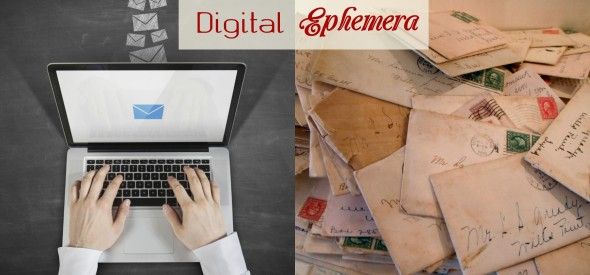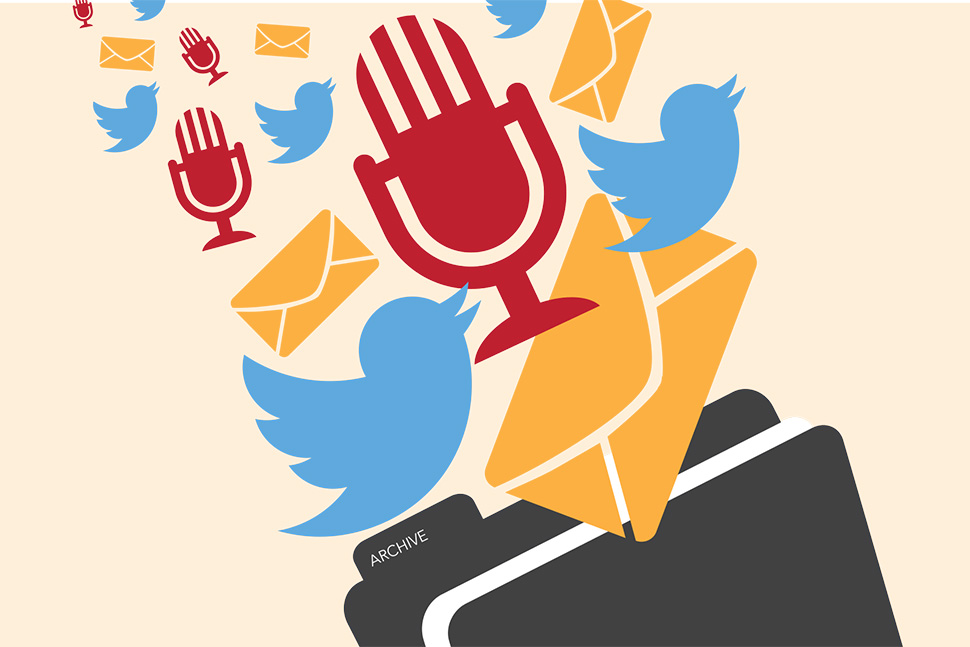Digital Ephemera

What is digital ephemera and how do we save it?
Digital ephemera is just that: ephemera that is created in a digital space, such as email, tweets, text messages, and so on. Adam Doster wrote a thought-provoking piece on the subject in American Libraries Magazine entitled, “Saving Digital Ephemera.” While one might assume that digital ephemera is easier to collect than the tangible kind (no need to traipse into an archive or scour antique shops), the sheer volume makes it difficult:
“Larger institutions also got involved in attempting to preserve digital ephemera. That includes the Library of Congress (LC), which reached an agreement with Twitter in 2010 to build an onsite research archive.
Archiving and preserving outlets such as Twitter will enable future researchers to access to a fuller picture of today’s cultural norms, dialogue, trends, and events to inform scholarship, the legislative process, new works of authorship, education, and other purposes.
However, at Twitter’s current size, its users send 200 billion tweets per year, and LC’s project eventually became unsustainable.”
Even if you do find a way to easily save it, how do you access it?
“’It’s getting less and less expensive to save things digitally; it’s less of an issue,’ says Rachael Bower, director of the Internet Scout Research Group, at the University of Wisconsin–Madison. ‘On the other hand, storing oodles and oodles of digital material with no easy way to access it, to look through it and know what you have, doesn’t seem ideal either.’”
Also, you have to consider the ever-evolving nature of software:
“Librarians and archivists must also consider the speed with which technology evolves. An archival copy of a podcast, say, must include the relevant software to play the actual show, even if advances in computing will eventually make that software obsolete.”
While the Macintosh is over three decades old, strategizing ways to save digital ephemera is still a new business.
“Kari R. Smith, a digital archivist at the Massachusetts Institute of Technology, says that, within umbrella organizations like ALA and the Society of American Archivists, there are round tables and working groups that are constantly looking at how to describe and capture this kind of material and how to ensure like-minded people don’t waste finite resources on projects with duplicate aims. ‘Making sure you’ve got some sense of why you’re preserving what you’re preserving long term,’ Bower says, ‘is incredibly critical.’”

